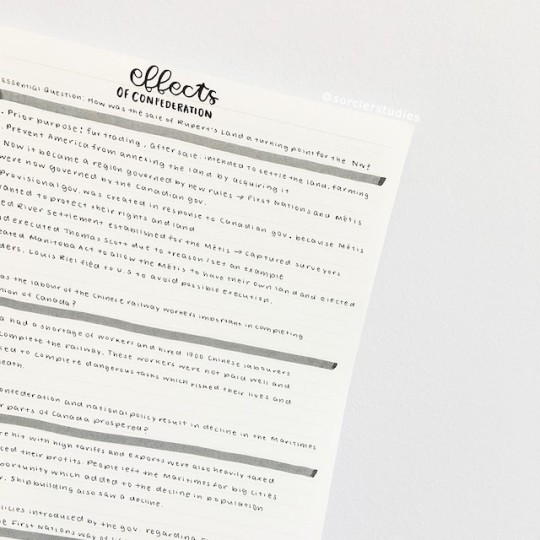#studymint
Photo

you might’ve seen an unfinished version of this note before, but here’s the completed one! i recently took a test on this topic and i think i learned a lot about how to study for history :)
📝 pentel energel lrn 0.5, pentel fude touch brush pen (black), muji b5 paper, grey crayola marker
posted on ig :: https://bit.ly/2TeS7dW
#muji#notestagram#studyspo#notes#studymotivation#motivation#mujipaper#pentel energel#pentelfudetouch#lettering#history#historynotes#og#phxto#studying#confederation#ilikethisphotoalot#braniakk#studymint#laenotes#studyquill#tbhstudying#studyspiration#new studyblr#new studyblog#smallstudyblr#crayola#stationery#stationary
464 notes
·
View notes
Text
alexincollege replied to your post “I have an interview with Princeton over the phone which is just as...”
GOOD LUCK <3333 *internet hugs and good vibes*
THANK YOUU <3<3<3 *hugs back!*
studymintreplied to your post
“I have an interview with Princeton over the phone which is just as...”
i might be seeing this late but good luck!!
You were right on time(: Thank you!
sp0okyheart replied to your post
“I have an interview with Princeton over the phone which is just as...”
So, how was the interview? did everything end up well?
I didn't really know what to say (I'm so awful at talking, especially on the phone) so I jumped all over the place, but the guy seemed to be understanding so I think it went okay(:
2 notes
·
View notes
Text

Revision Notes
My first step to studying history is making revision notes that summarize the material I’m learning. I aim to write around one point per paragraph but I rarely do that :’) Realistically, I write around 4-5 points. (whoops!) One trick I use to make myself truly distill the material is by pretending the bullet point I’m making is going to go on a flashcard. (Which it is anyway!) This way, I remember that I don’t want to distill the information again for the flashcards part.
Flashcards
This is actually a recent thing I started to do when studying for history. On one side of the flashcard, I would write the paragraph title or the general gist of what the content is about. On the other side, I have the bullet point(s) from my notes summarized even further. After creating the flashcards, I practice retrieval from both sides. If I’m using physical flashcards, my process for reviewing is the same as the learn mode on Quizlet. The learn mode is simply get it right twice. It’s quick, easy, and I learn a lot. When using digital flashcards, my favourite site to use is Quizlet. I use different modes depending on how much time I want to spend studying and the depth of the material. Flashcards are extremely helpful for remembering the dates of key events, main ideas, or key people.
Mind map
For the longest time ever I didn’t understand the point of mind maps. They were just too confusing?? I decided that I would try to make a mind map for the history topics. The topics were just too confusing and a mind map helped me see where they connected. I also used my mind map as a guide for my ‘blurts’. You can see one of my mind maps here.
Blurts
Blurts are when I see a topic name/paragraph title and I blurt out everything I know about the topic. Blurts can really help you see the gaps in your knowledge.
Timelines
This is self-explanatory when it comes to history. There’s just so many random dates and having it in chronological order is really helpful.
This is just my way of studying for history. Of course, it’s best to experiment with what works best for you when studying if you can. You can see I experimented a bit by trying out flashcards and mind maps. The end result: a more effective way to study for me!
#og#txtpost#history#howtostudy#studytips#tips#advice#howtostudyhistory#studyhistory#obsidianstudy#laenotes#studymint#michellenstudies#hermionegoals#studiversal#katsdesk#tbhstudying#braniakk#adelinestudies#adelinestudiess#studyblr#studyadvice#mytips#myadvice#my advice#hpstudyblr#highlighteur#highlighteurs#mildlineurs#mildlincrs
133 notes
·
View notes
Photo

these don’t look that nice but they were effective! what are your favourite ways to make study notes?
📝 muji b5 lined paper, pentel energel lrn 0.5, pentel fude touch brush pen (light & dark brown)
posted on ig :: https://bit.ly/2SGehB6
#stationery#history#historynotes#notes#og#phxto#brush pen#studyblr#studyspo#new studyspo#new studyblr#new studyfinds#new studygram#studyspiration#stationerylover#calligraphy#study#new studyblog#laenotes#studymint#michellenstudies#hpstudyblr#educatier#adelinestudiess#adelinestudies#highlighteurs#studyplants#morningkou#studyguideverified#psychloegy
101 notes
·
View notes
Text

The Feynman Technique is something I recently stumbled across on when searching for memorization techniques. What’s interesting is that it is a simple and easy method to quickly distil information, but no one I know uses it (or heard of it). This method is extremely helpful for understanding and memorizing difficult concepts.
Here are the steps to the Feynman Technique:
1. Get a sheet of paper or whatever you’ll be reviewing on, but it should be blank.
2. Write the title of your topic/concept.
3. Write a simple explanation in the simplest wording you can, as if you are to teach someone.
4. Review anything you missed.
5. Write another explanation. If you deviate from distilling the information or you’re starting to paraphrase the information, simplify your explanation more.
a. If possible, use an analogy.
#memorization#studying#advice#tips#help#memorizing#techniques#og#txtpost#adelinestudiess#adelinestudies#studyblrmasterposts#einstetic#einstein#braniakk#rhubarbstudies#laenotes#studymint#studytherin#studyquill#obsidianstudy#morganastudy#michellenstudies#procrastinatae#educactus#simonestudies
90 notes
·
View notes